How You Can Help Australia
Posted by Pawan Saunya onAustralia has been ravished from devastating fires that have been roaring through the country since October. 15.6 million acres have been burned, destroying homes and businesses and killing 25 people and an estimated 1 billion animals. Here’s where you can donate to help Australia.
But first, let’s talk about climate change.
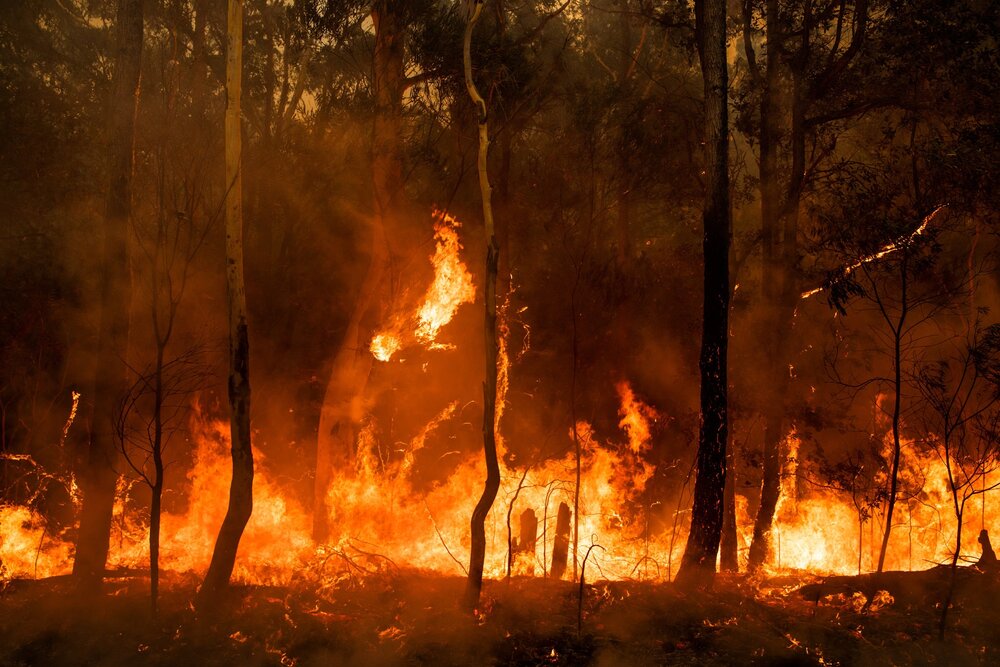
via Matthew Abbott for The New York Times
Experts say that Australia’s dry season was particularly lengthy and detrimental this year due to impacts from climate change. Climate change is going to increase both the frequency and intensity of natural disasters like wildfires by increasing temperatures and lengthening the dry season.
It is vital that we take climate action now to mitigate the future impacts that climate change could have on our world. Cut your meat consumption, buy secondhand and push for climate policy at the local and national levels. If action isn’t taken now, these fires will become the new normal.
Where to donate:
-
The New South Wales Rural Fire Service is a volunteer-based agency that is on the front lines of fighting the fires. All donations go towards supporting the volunteer brigades.
-
The Australia Country Fire Authority
The CFA is promoting four different avenues of giving to support their firefighting efforts. You can either donate to help communities in need through the Victorian Bushfire Appeal, support volunteer firefighters through the Volunteer Welfare Fund, or directly to the CFA or their Brigades.
-
Donations to the Koala Hospital are being used directly to support the rehabilitation of koalas harmed in the fires. The website is facing unprecedented demand due to donations, so they ask to try again in a few days if transaction time is particularly slow. You can also donate to their GoFundMe here.
-
The Australian Red Cross is using donations to deploy trained volunteers to impacted communities and is issuing emergency grants to those who will need financial assistance to recover from the fires.
-
The WWF is planning to help reforest the area faced with disaster when the fires subside and are committed to long-term conservation efforts in the region.
-
GIVIT is a non-profit using 100% of the money they receive to provide victims of the fire with the items they need most, such as backpacks and clothing.
-
WIRES is a wildlife rescue group in Australia that is working tirelessly to rescue injured and orphaned animals that were impacted by the fires. All donations to their emergency fund go straight to their rescue efforts.
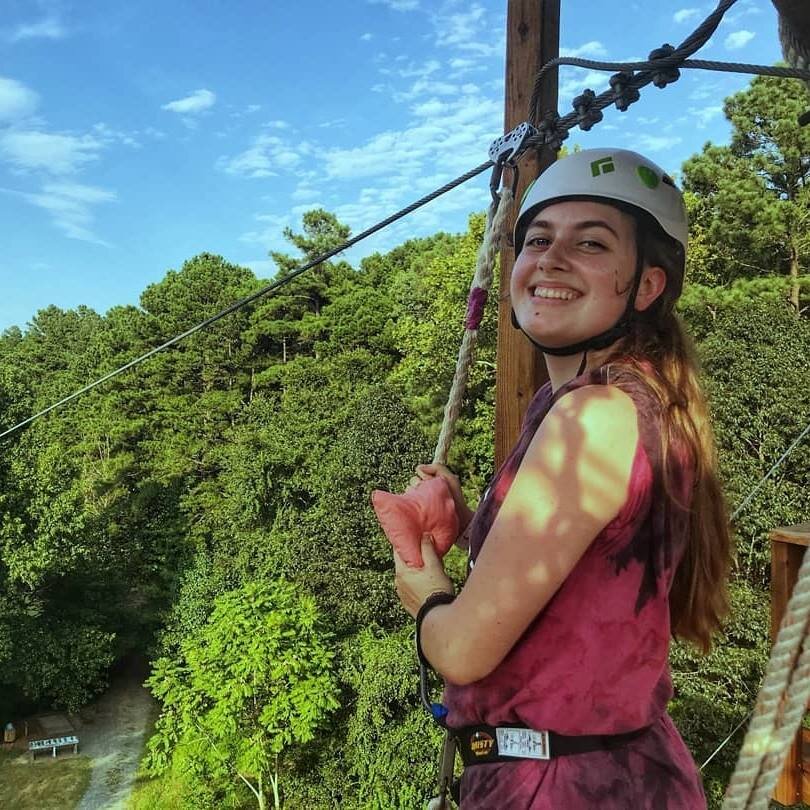
Kayla Guilliams
is the blog manager for Zero Waste Club, combining her love for writing with her passion for all things environmental sustainability. She is currently a student at the University of North Carolina at Chapel Hill where she is studying journalism, environmental studies, and food studies in hopes of building a career in environmental activism. You can find her on Instagram as @kaylaguilliams.
35 Eco-Friendly New Year's Resolution Ideas
Posted by Pawan Saunya onThe dawn of the new year is a perfect time to press reset and set goals and resolutions. While everyone’s goals will be different, we should all have the goal of being more eco-friendly in 2020 for the sake of our planet and human health. Here are 35 eco-friendly resolution ideas that will help you become more sustainable in 2020.

Drive less- walk, bike, or use public transit instead
Start a compost bin
Go vegan, vegetarian, or embrace Meatless Mondays
Use Ecosia to help plant trees in deforested areas
Carbon offset your travel
Embrace zero waste swaps
Start buying seasonal produce from local farmers markets
Call or write your politicians once a month about the climate crisis
Avoid fast fashion- try to only buy secondhand clothing
Start plogging
Become a conscious consumer- try to only buy from ethical, sustainable brands
Start repurposing your food waste
Stop buying palm oil
Unsubscribe from physical and digital junk mail
Find more joy in experiences- not things
Start a community garden
Invest in your local economy by supporting locally owned businesses
Participate in your local climate marches
Become educated on environmental issues and the environmental impacts of large corporations
Switch your home to run on renewable energy
Swap your faucets and showerheads for water-saving ones
Switch to a green bank
Hang dry your laundry
Be a tourist in your own city instead of hopping on a plane for vacation
Start attending your local government meetings to give input on local sustainability projects
Host a clothing swap or two
Create a pollinator garden
Take shorter showers
Start monthly donations to non-profits solving environmental issues
Learn how to mend clothing
Volunteer at local river clean-ups, recycling events, farmers markets, etc.
Start unplugging (some) appliances and electronics when they aren’t in use
Try having a no-buy month
Invest in renewable energy projects, green businesses, and other sustainability initiatives
Inspire others to be sustainable through your actions

Kayla Guilliams
is the blog manager for Zero Waste Club, combining her love for writing with her passion for all things environmental sustainability. She is currently a student at the University of North Carolina at Chapel Hill where she is studying journalism, environmental studies, and food studies in hopes of building a career in environmental activism.
Why You Should Veganize Christmas Dinner
Posted by Pawan Saunya onChristmas dinner is arguably the most important part of Christmas. However, because the meal is traditionally filled with meat and dairy, it comes with a cost. Here are the 5 main reasons why you should veganize your Christmas dinner.
Energy and Water Use
Plant foods require a lot less energy and water to grow, harvest and process than their meat and dairy counterparts. According to the Water Footprint Network, it takes 2,000 gallons of water to produce just one pound of beef and 500 gallons for one pound of poultry. This is a highly inefficient use of water considering, according to the WWF, 1.1 billion people lack access to water. Plant foods, like potatoes, can use water much more efficiently. One pound of potatoes requires 100 gallons of water- 20x less than beef and 5x less than poultry. A study done by the American Society for Clinical Nutrition also found that diets more heavily based on plants require a lot less energy than diets based in meat.
Greenhouse Gases
Cows are notably high emitters of greenhouse gases like carbon, nitrous oxide, and methane. One beef patty has a 10x higher global warming potential than a substitute like a Beyond Burger, meaning it has a much higher rate of greenhouse gas emissions, and according to the Food Climate Research Network, 14.5% of greenhouse gas emissions come from livestock alone. While plant foods are also guilty of emissions due to fertilizer use and necessary transportation, it’s at a much smaller scale than livestock. A vegan diet has a carbon footprint of 1.5 tons of CO2e (Carbon Dioxide Equivalent), whereas a meat-lovers diet has a footprint of 3.3 tons.

Antibiotic Resistance
Livestock is being pumped with antibiotics at unprecedented rates. These antibiotics are being used as growth stimulators, not in an attempt to cure disease. Humans are exposed to these antibiotics through eating meat, and by being exposed to these antibiotics at low levels for a long period of time, humans could become resistant to their effectiveness, and antibiotics could no longer be effective at killing off bacteria in humans. While research is not 100% conclusive, it is clear that antibiotics need to stop being used on animals at such rates, and people can protect themselves by avoiding meat.
Pollution
Manure that comes from livestock is a cause of dangerous water pollution. Rains and wind can drive manure into bodies of water, and this nitrogen-rich manure causes a process called eutrophication to take place. Eutrophication is where an excess of nutrients, notably nitrogen, ends up in a body of water and leads to the growth of plants like algal blooms. These plants use up a lot of the oxygen in the water, causing animal life to die due to oxygen depletion. Manure leaching into the water is also problematic to human health, as it can cause many health problems if ingested.
Deforestation
Earlier this year the Amazon Rainforest experienced a highly destructive fire that was said to be caused by deforestation. This deforestation was a direct result of Brazil’s growing agricultural sector that is largely driven by soybeans. These soybeans are being grown at a higher and higher rate to be used in livestock feed- not to be fed for humans. Livestock require such high amounts of feed that vast swaths of land have to be deforested just to grow their feed, when this land could otherwise be used to directly feed humans.
Are you convinced to try out a vegan Christmas dinner? Check out our recipe for sweet potato and mushroom wellington:

Kayla Guilliams
is the blog manager for Zero Waste Club, combining her love for writing with her passion for all things environmental sustainability. She is currently a student at the University of North Carolina at Chapel Hill where she is studying journalism, environmental studies, and food studies in hopes of building a career in environmental activism. You can find her on Instagram as @kaylaguilliams.
Eco-Friendly Christmas Ideas
Posted by Pawan Saunya onTo Tree or Not to Tree: Eco-Friendly Christmas Ideas
Christmas is my favourite time of year, everyone gets a ‘go’ – way better than a birthday, when it’s just one person’s turn. Can you tell I grew up with three sisters and I still find it hard to share?!
It is a time of indulgence; joy, presents, laughter, gathering, eating. It is also a busy time of year; planning, thinking, buying, making, wrapping, cooking.
We can’t do anymore. Fact. So let’s embrace the idea that less (and eco-friendly) is more.
I don’t think green should be obscene either, not in taste or in price. There is no need to sacrifice aesthetics for ethics, I believe it’s called eco-chic. Embrace it.
Taking the tree as our starting point, how can we zero the waste with little to zero effort? To misquote, dream a little green with me!
Real vs Fake
The 8 million Christmas trees that people have bought specifically for the holiday season in the UK will result in 12,000 tonnes of total waste.
If you already own a plastic tree, I beg of you, use your tree, use it until it’s on its last legs and then consider a more sustainable option in the future. So for this year, for you, no need for any more effort.
Natural Tree Buyers- buy local. Crucially, dispose of it correctly, chat up your local council to collect it. Don’t send it to landfill. Trees will be used as chippings for local parks and walkways.
And what are the alternatives to both natural and fake trees? Super cool, crafty, creative trees. Book Trees. Step Ladders with lights and Baubles. Recycled cardboard Trees.
Guaranteed you have books. Likely you have a ladder. You probably have the internet. Any option means at most you have to walk to the storage and at best, you can order from your sofa. If you are ordering online, please consider the packaging and order everything you need from a few shops to save postage.
Here are just 3 ideas but there are many more out there!

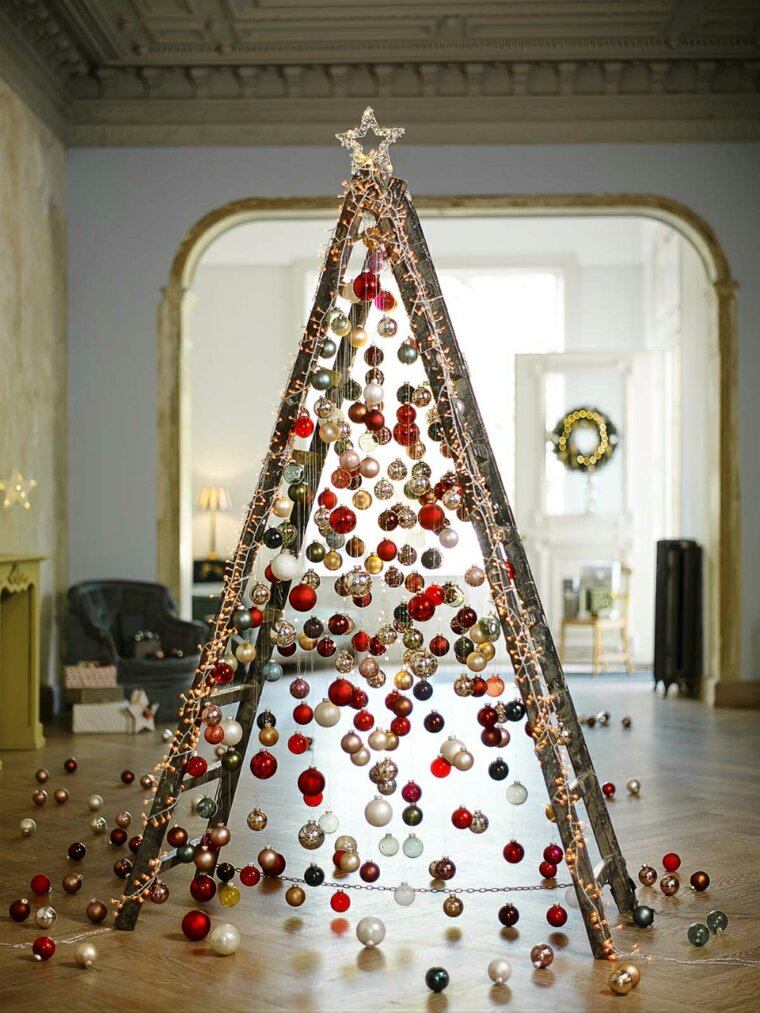
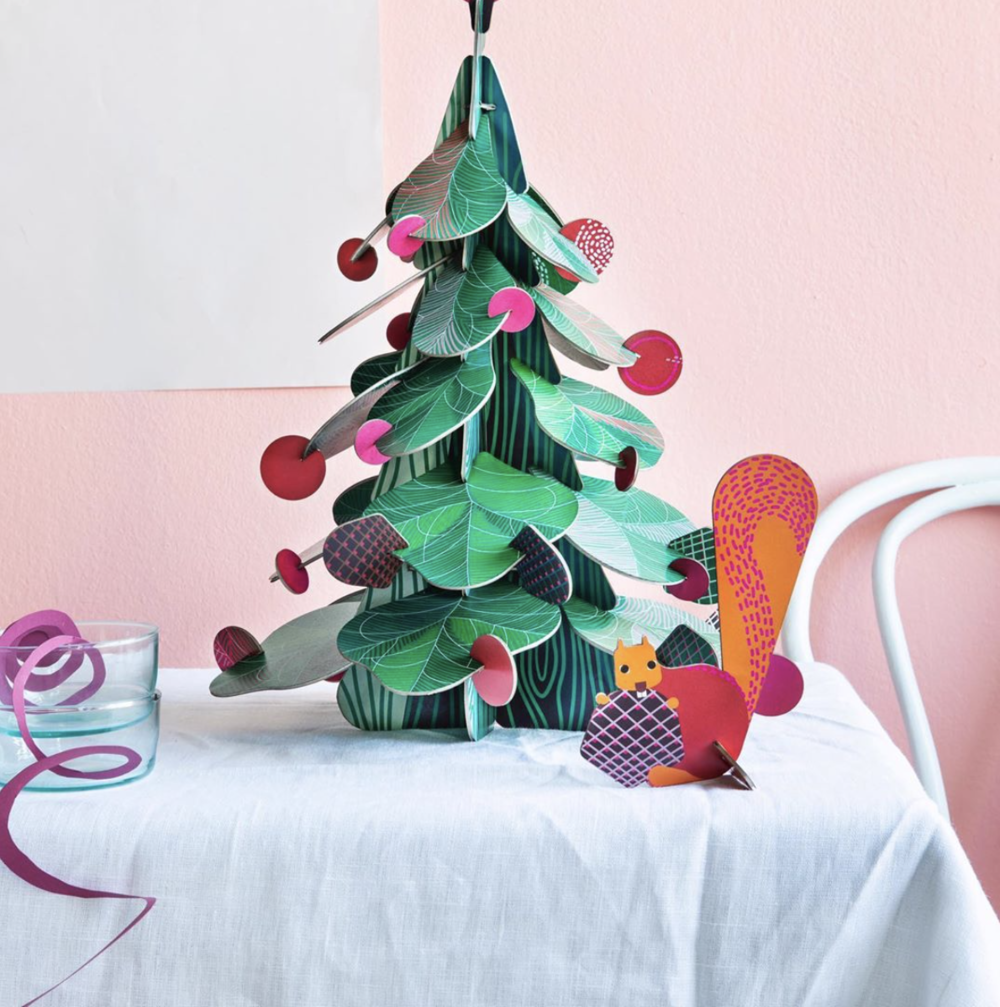
Image credits, Studio Roof, Casa Diseno.
To Tree Part 2: Decorations
My guess is you have decorations already. If not, buy local. Saves petrol, saves time, supports small businesses. Buy plastic free decorations- remember eco-chic. This will make your tree look classier, I promise.
Wooden decorations may cost more than plastic but in the manner of saving money, buy less- no one wants an overladen tree.
I know, I know, don’t get your tinsel in a twist, I promised zero extra effort, so stick up your hand and ask your child, mother, neighbor, partner to make some decorations! Store them carefully and you won’t even need to ask next year! Here are some DIY decoration ideas from Zero Waste Club:
To Tree Part Three: Presents
This is a great subject because I love presents. I love the thought that goes into presents. Genuinely, the thought counts because I will otherwise judge you. From on high. Mercilessly. In the way that the spirit of Christmas condemns. I don’t need them to be expensive, even the wrapping can be thoughtful, and thought is free!
I am also excellent at giving presents. It’s a rare gift- all puns intended.
So what does a plastic free present look like? Does it have to be a “thing” – might you consider a non-object?
Experiences: My favourite gift that keeps on giving. Anticipation, enjoyment and a memory. Theatre, ice skating, puppet show, circus, concert, supper, the zoo. Make it age appropriate and go!
Charity: Donate to a charity of someone’s choice. Buy a present that donates profit to a charity. We love these Polar Circles that give 20% profit to Marine Conservation Society.
Gift of Time: Offer to babysit / dog walk / fill a freezer. If someone did all three things for me, I might marry them!
For children: Pause and step away from the Legos. What other materials could there possibly be other than plastic? Wood, bamboo, felt, sugar cane, or metal. PomPom makes sugarcane building blocks that look like Lego, build like Lego, and are compatible with Duplo.
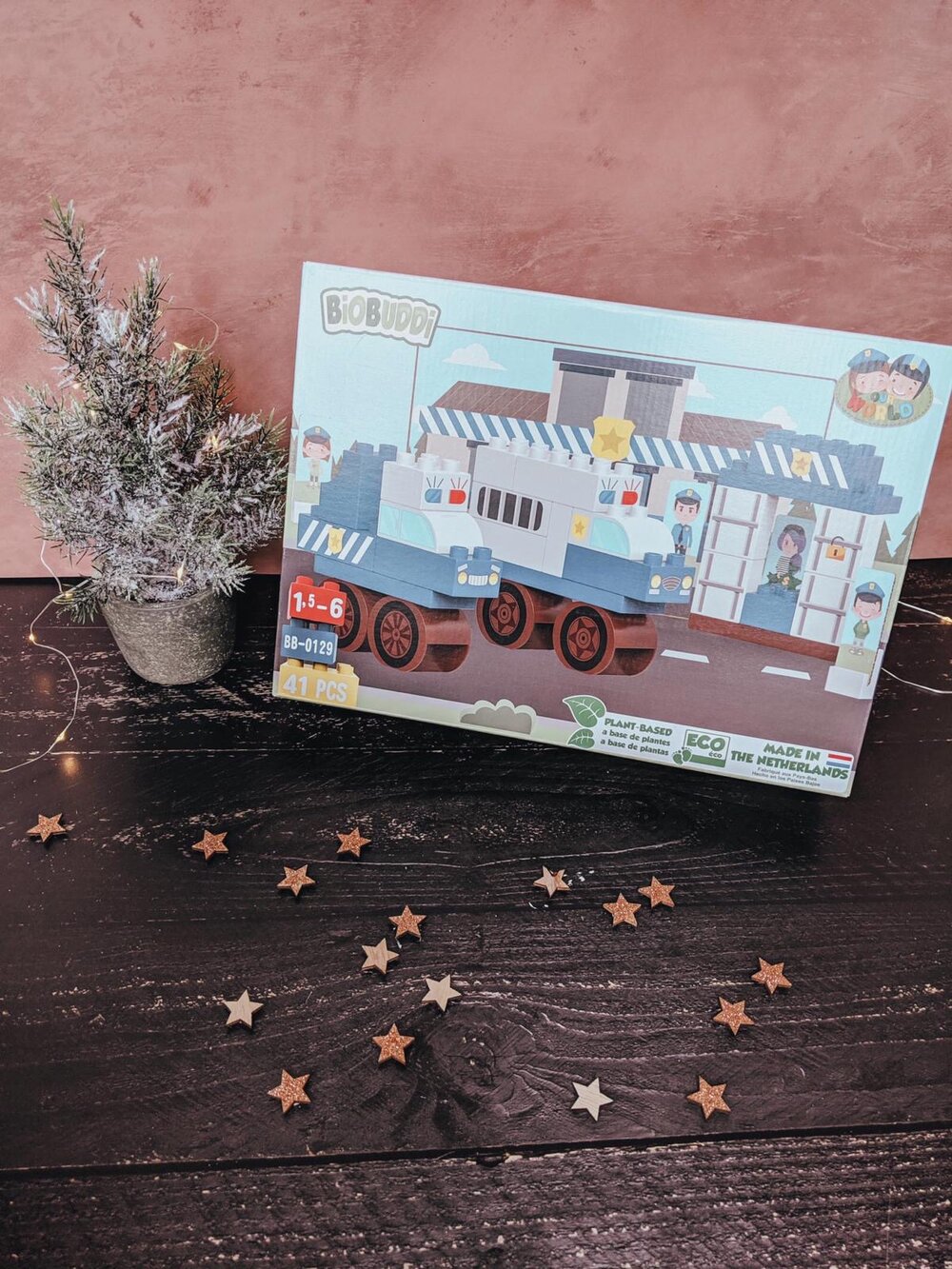
Image credit, Eilidh, Mummy and Monkeys
It’s a wrap.
This year in the UK alone over 200,000 miles of wrapping paper will be thrown away. Greenpeace also found that 1kg of wrapping paper emits 3.5kg of CO2 during production. Plus, lots of wrapping paper is lined with foil or glitter making it unrecyclable, not to mention the plastic tape that is used to keep the wrapping in tact.
The route with least resistance is newspaper. Assuming you still buy the weekend papers and it’s not online and Sunday night remains sacred, use them. That’s what the sports section is for!
If you have to buy paper, buy brown recycled paper. Shabby-chic is in and you heard here first! Tie with raffia string, tuck a little posy of lavender or rosemary in the top. So pretty (and thoughtful and cheap). Use last year’s Christmas cards as label tags.
Oh, but you don’t want to leave the house to buy supplies? No problem. We look East to Furoshiki, the Japanese art of wrapping presents. You can use any scarf, any swaddle and possibly even a tea towel that you have lying around. Don’t miss this fantastic video created by Emily Dawe.
You want glitter? No problem- buy plastic free glitter! Dust your wrapping and frost yourself. And for those you like least, don’t be frugal, it’s impossible to hoover!

Cecily Henderson
is one half of PomPom – a trailblazing website for imaginative plastic free designs for children, from product to packaging. Katherine and Cecily are old friends, they met at university, trotting late to lectures and much too late home. They shared hopes, lectures and Ribena. They have a collective love of travel, books, theatre, art, design, the environment and now, children. They are imperfectly green. Katherine has two small girls and Cecily two small boys, one of which arrives imminently. Sounds more like a matchmaking service than a business venture to me!.
Zero Waste Cleaning Guide (For Your Whole Home!)
Posted by Pawan Saunya on
Cleaning can be a daunting task- there’s always something to be wiped, scrubbed, or swept- and it can seem even more daunting when you try to do it in an environmentally friendly way.
Traditional cleaning products come chocked full of chemicals that can contribute to smog, air pollution, and a host of health issues. They also come packaged in plastic, and it’s almost impossible to find any cleaning products in-store that aren’t detrimental to the environment- and if you do find them, they’re probably relatively expensive.
So, if you’re looking to be environmentally friendly in your cleaning routine without breaking the bank, you’re going to have to make your cleaners yourself.
Cleaning your whole home with DIY solutions can be done with just a few ingredients: bar castile soap, washing soda, baking soda, vinegar, salt, vodka, and essential oils. All of these ingredients are eco-friendly, and can probably be purchased with little to no waste. Read on to see how you can utilize these ingredients to clean everything in your home.
DISHES:
Instead of buying a traditional, brightly colored dish soap, whip up your own batch using these three simple ingredients.
Ingredients:
3 tbsp grated bar soap (organic castile soap works well)
1 tsp washing soda
2 cups water
Optional: add 10–20 drops of essentials oils after it has set for added scent (we recommend lemon)
Method:
1. Add grated bar soap and water to a space pan.
2. Heat the mixture until the soap has dissolved, and turn off heat.
3. Leave mixture to set for at least 2 hours.
4. If the mixture sets too hard, give it a whisk and it should loosen up.
5. Optionally, stir in essential oils.
6. Transfer to a washing up liquid dispenser.
7. Use with warm water and wash dishes as normal.
Use this dish soap with a bamboo dish brush for a fully zero waste routine.
KITCHEN COUNTERS, WINDOWS, MIRRORS, AND VIRTUALLY ALL OTHER SURFACES:
If you go to the store, you’re probably going to encounter a separate cleaner for every surface in your home- mirrors, windows, counters, etc. Truth is, you can clean most surfaces in your home with this simple, all-purpose cleaner that’s made with two ingredients: water and vinegar (or vodka). Simply add an equal ratio of the two to a spray bottle and clean away. You can add essential oils or diffuse the mixture with citrus peels or rosemary for some pleasant aromas. Spray the mixture on any surface you need to clean and wipe with a reusable cloth. Just don’t use this cleaner on granite countertops- we suggest you clean those using dish soap and warm water.
SHOWERS, TUBS, TOILETS, OVEN TOPS, STAINED TILES:
For hard to clean areas, you need something more for scrubbing than a simple cleaning spray. Using three simple ingredients, you can whip up a deep cleaning powder that’s good for these tough areas.
Ingredients:
½ cup of baking soda
¼ cup of salt (un-iodized)
¼ cup of washing soda
Method:
Combine the ingredients in a jar. Use in combination with your all-purpose cleaning spray.
CARPETS:
Vacuuming does wonders in keeping carpets tidy, but you will still have to deep clean them every now and again using a carpet cleaner.
Ingredients:
1 cup of white vinegar
2 cups of water
2 teaspoons of salt
Optional: Essential oils
Method:
Combine the ingredients in a spray bottle, spray liberally on your carpet, allow it to dry, and then vacuum.
To remove stains, try rubbing a combination of salt and white vinegar on the stains.
HARDWOOD FLOORS AND TILE:
Simply sweep your hardwood floors and use this simple recipe to get clean floors.
Ingredients:
1/2 cup white vinegar
One gallon of warm water
Method
Combine the ingredients in a bucket. Submerge a mop in the solution, wring it until damp (not dripping), and mop as normal.
You can also use this solution on tiles.
LAUNDRY:
To freshen up your clothes and linens you can use a simple 1:1 mixture of water and vodka as needed. As the vodka evaporates, it will leave your linens smelling fresh. You can also use this spray to freshen up your carpets or add essential oils to make an air freshener.
To actually wash your clothes, you can use a DIY laundry detergent.
Ingredients:
1 bar of castile soap (grated)
1 cup of baking soda
1 cup of washing soda
Essential oils (optional)
Method:
Add 1–2 tablespoons to the bottom of the washer, wash with cold water (to save energy), and then hang dry (to save even more energy). You can also add ¼ cup of white vinegar to your washer as a fabric softener.
If your whites need freshening up, presoak them in a 1:4 ratio of baking soda and warm water for no more than 8 hours before washing as normal.
To remove stains, use this trusty chart to guide you in the right direction (courtesy of Paris to Go):


Kayla Guilliams
is the blog manager for Zero Waste Club, combining her love for writing with her passion for all things environmental sustainability. She is currently a student at the University of North Carolina at Chapel Hill where she is studying journalism, environmental studies, and food studies in hopes of building a career in environmental activism. You can find her on Instagram as @kaylaguilliams.
